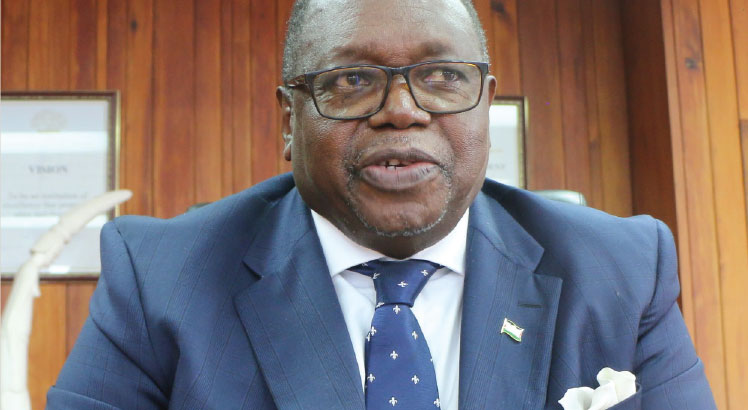Reserve Bank of Malawi (RBM) Governor Wilson Banda says the 25 percent devaluation of the kwacha effected on May 27 this year has helped to stabilise the local unit.
Speaking in an interview on Saturday in Blantyre on the sidelines of CDH Investment Bank 10-year anniversary gala dinner, he said the kwacha has now reclaimed its stability, which was lost recently manifested by its steep depreciation between last year and May this year.
Banda: We cannot say if this is an equilibrium
After averaging around K730 to the dollar for over three years, the local currency depreciated to about K825 against the dollar at the end of April this year before it was further devalued by 25 percent in May, a move RBM said was meant to realign the exchange rate with economic fundamentals.
Post-devaluation, the kwacha fell to K1 036 per dollar from K825.
Banda highlighted that the devaluation has stabilised the kwacha, resulting in the local currency not collapsing.
He said: “We still have the kwacha that is trading though there are pressures on foreign exhange where demand is high against low supply which obviously puts pressure on the kwacha.
“In order to avoid the collapse in the kwacha, we are looking at ways and means to rein in the kwacha, which, among others, include getting loans and grants from institutions such as the World Bank and the Africa Development Bank. This level of financial injection is thus helping to keep kwacha afloat and stable.”
Banda, however, said this is not a perfect environment, but said the central bank is doing all it can to ensure that it keeps the market balanced.
“What we are saying is that we have some stability and things can only get better now. We cannot say if this is an equilibrium, but we are watching this space carefully because there are a number of crucial commodities that depend on foreign exchange,” he said.
Spot-checks show that the kwacha is trading at an average of K1 300 to a dollar in most authorised dealer banks against the official K1 036 daily foreign exchange bureau rate published by RBM.
At Victoria Forex Bureau, for example, a dollar is selling at about K1 290 against the official K1 036 daily foreign exchange bureau rate published by the RBM.
The wider spread was also noticed at FDH Money Bureau Limited where a dollar was trading at K1 302 to a dollar.
Financial Market Dealers Association vice-president Jim Kalua said in an interview yesterday there was supposed to be at least a big injection in the market post-devaluation to ease supply and demand disparities of foreign exchange.
RBM devalued the local unit by 25 percent in May this year amid a crippling shortage of foreign exchange.
Before the devaluation, imbalances between supply and demand had been prevalent on the domestic foreign exchange market evidenced by low foreign exchange supply, declining official foreign reserves and widening spread of rates on the market. Meanwhile, gross official reserves under the direct control of the RBM have continued to fall and are now at $378.89 as of August 2022, an equivalent of 1.52 months of import. This is a drop from $604.50, an equivalent of 2.42 months of import cover in August 2021, according to RBM Financial Markets Development Report.
The post RBM governor says kwacha now stable appeared first on The Nation Online.
 Moni Malawi
Moni Malawi 

